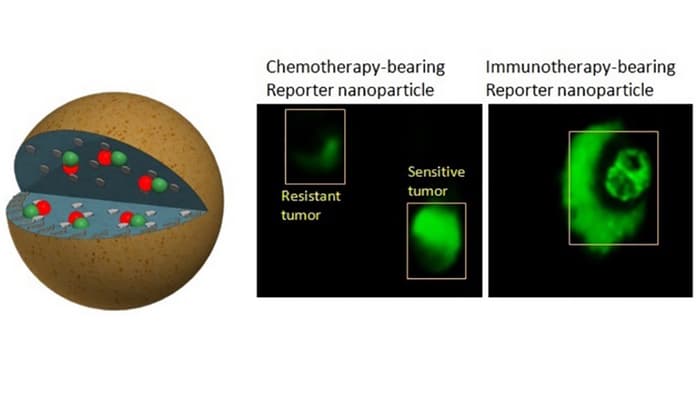
Knowing whether a therapy is working effectively is extremely important when treating cancer. That information can have a big impact, potentially prompting a change in treatment and improving its outcome. Right now, we don't have a method of detecting whether a tumor is reacting to medication until numerous cycles of therapy have been completed,..
Central to the new nanoparticle tech is an enzyme called caspase, which is activated when cells die. The researchers engineered the nanoparticles, which can be loaded with medication, so that they glow green in the presence of the enyzme. Simply put, the more cells that die as a result of the drugs administered to the tumor, the brighter the nanoparticles glow.
The cells are designed to start lighting up as soon as the cancer drug begins to work, providing very fast confirmation – some eight hours in testing – that the chosen treatment is proving effective. If no such reaction is observed, then it tells the doctors that the therapy is likely not working, giving them the opportunity to switch to an alternative treatment. Timing is key when tackling cancer, and the new technology could give doctors the chance to switch therapies early enough that it could have a big impact on the overall outcome of treatment.
The team tested whether the nanoparticles were able to distinguish between tumors that were sensitive to drugs and those that were drug-resistant. In a laboratory environment, the researchers loaded the nanoparticles with anti-cancer drugs, and tested them on model versions of prostate cancer and a melanoma. In the case of prostate cancer, for which a chemotherapeutic agent called paclitaxel was used, the team observed an flourescence increase of 400 percent in tumors that were sensitive to the treatment. Positive results were also observed with the melanoma tumors.
Those early results are very positive, and strongly indicate that the nanoparticles could be useful for assessing how effective a therapy is on a much shorter time scale than current treatments, which usually rely on observing the size of the tumor. The researchers now plan to tweak the nanoparticles for direct use in human patients, working to evaluate the safety of the method prior to potential clinical trials.
"We can determine if a cancer therapy is effective within hours of treatment," said paper co-author Shiladitya Sengupta. "Our long-term goal is to find a way to monitor outcomes very early so that we don't give a chemotherapy drug to patients who are not responding to it."

 Previous page
Previous page Back to top
Back to top







